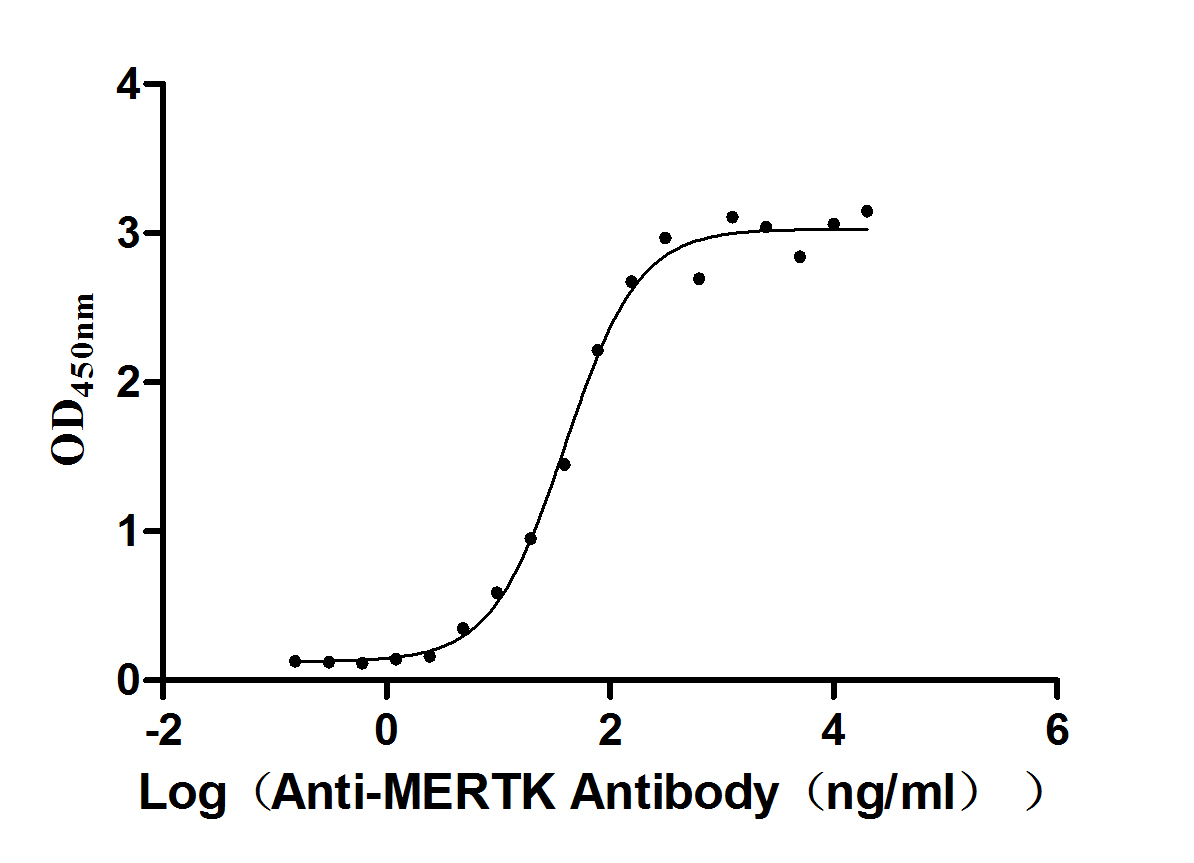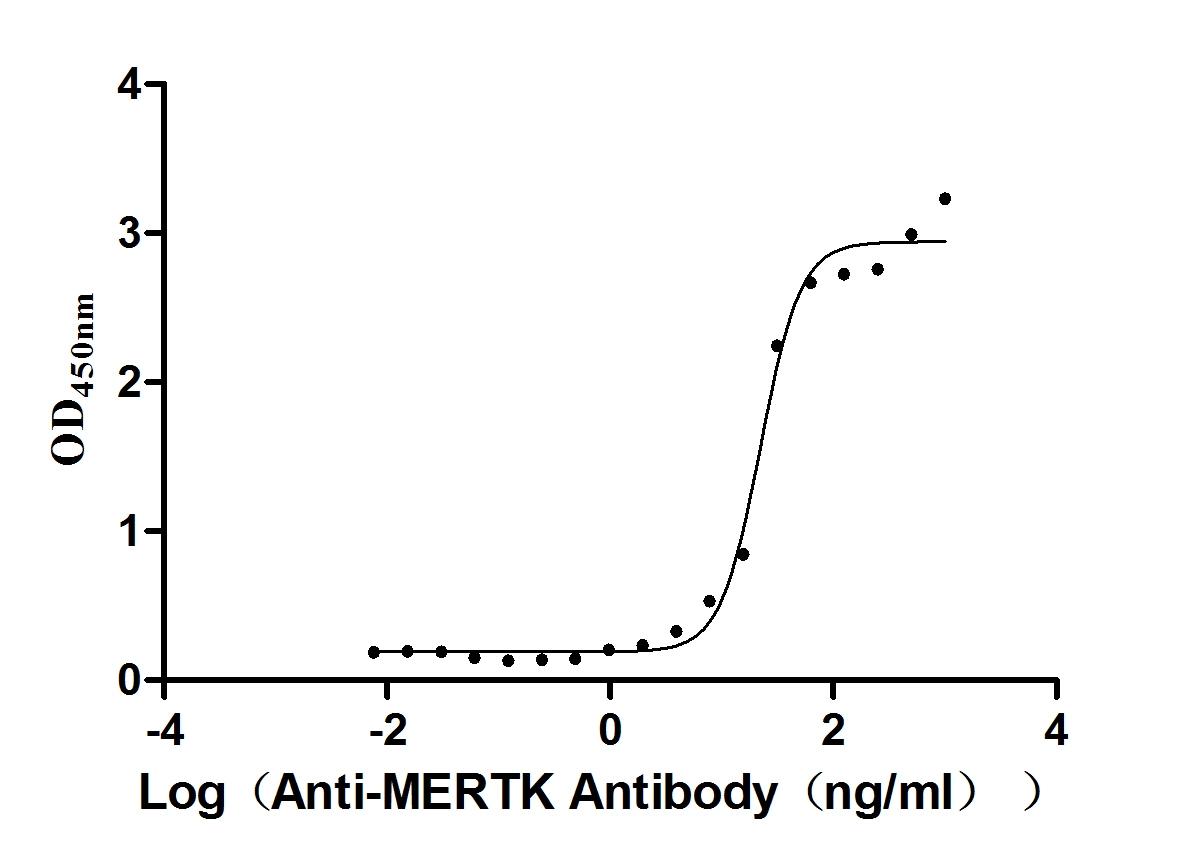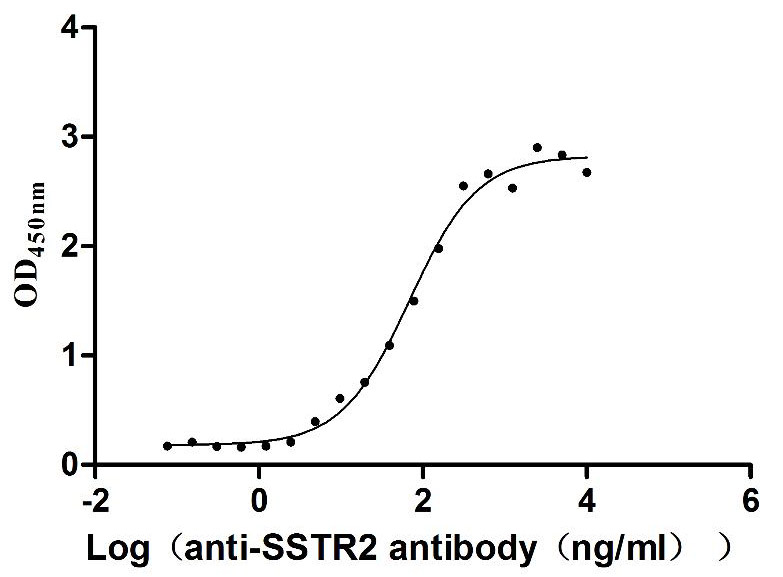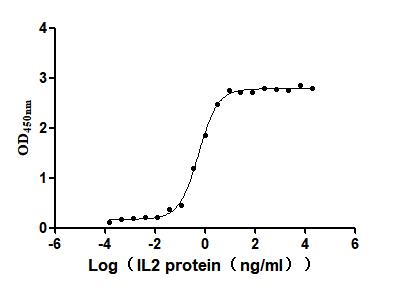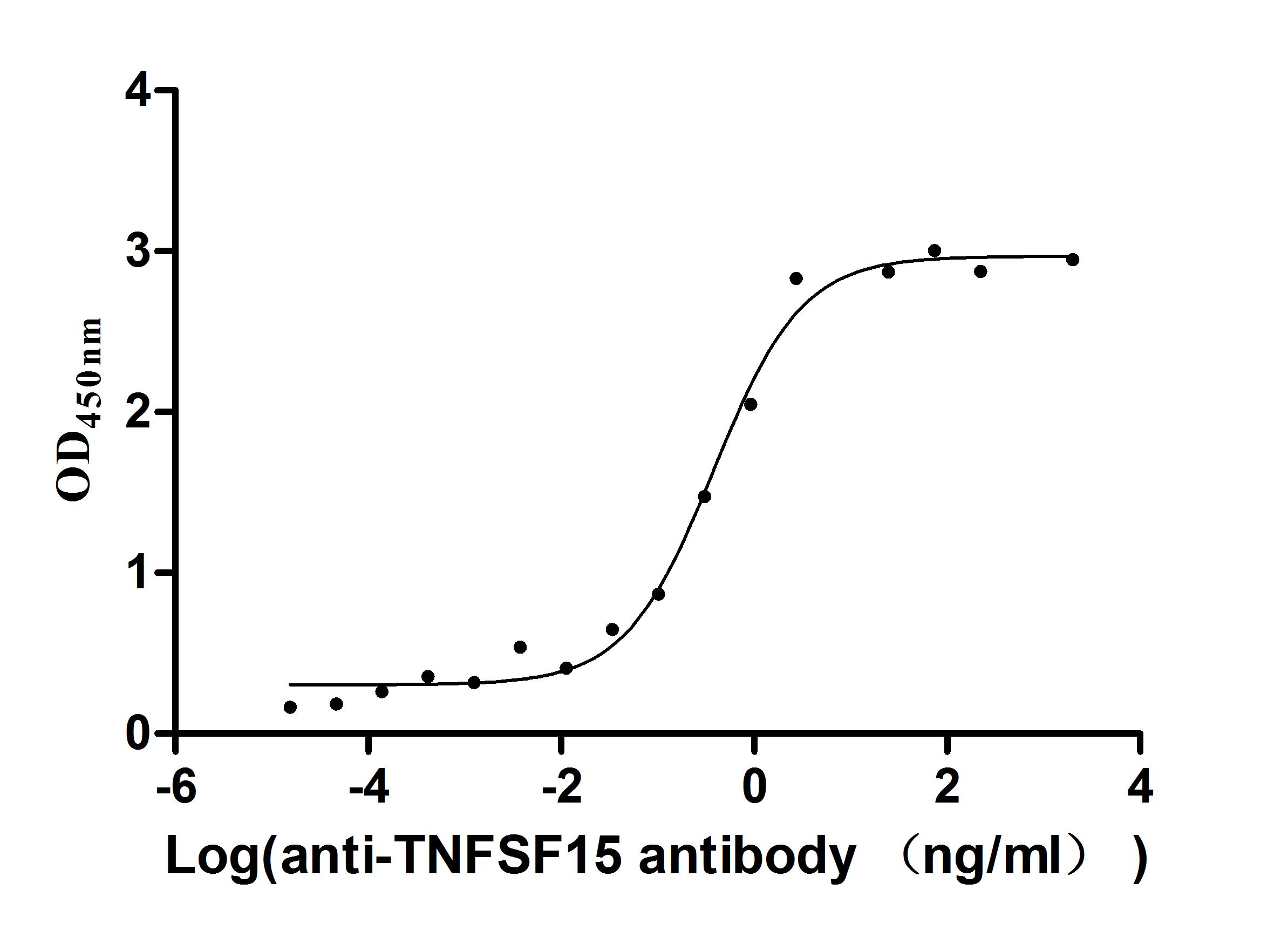Recombinant Human Probable tumor suppressor protein MN1 (MN1), partial
-
中文名称:人MN1重组蛋白
-
货号:CSB-YP607420HU
-
规格:
-
来源:Yeast
-
其他:
-
中文名称:人MN1重组蛋白
-
货号:CSB-EP607420HU
-
规格:
-
来源:E.coli
-
其他:
-
中文名称:人MN1重组蛋白
-
货号:CSB-EP607420HU-B
-
规格:
-
来源:E.coli
-
共轭:Avi-tag Biotinylated
E. coli biotin ligase (BirA) is highly specific in covalently attaching biotin to the 15 amino acid AviTag peptide. This recombinant protein was biotinylated in vivo by AviTag-BirA technology, which method is BriA catalyzes amide linkage between the biotin and the specific lysine of the AviTag.
-
其他:
-
中文名称:人MN1重组蛋白
-
货号:CSB-BP607420HU
-
规格:
-
来源:Baculovirus
-
其他:
-
中文名称:人MN1重组蛋白
-
货号:CSB-MP607420HU
-
规格:
-
来源:Mammalian cell
-
其他:
产品详情
-
纯度:>85% (SDS-PAGE)
-
基因名:MN1
-
Uniprot No.:
-
别名:AA003644; AA009236; dJ353E16.2; Meningioma (disrupted in balanced translocation) 1; Meningioma (translocation balanced); Meningioma 1 ; meningioma chromosome region 1; MGCR; MGCR1; MGCR1-PEN; MN1; MN1_HUMAN; Probable tumor suppressor protein MN1; RGD1565571
-
种属:Homo sapiens (Human)
-
蛋白长度:Partial
-
蛋白标签:Tag type will be determined during the manufacturing process.
The tag type will be determined during production process. If you have specified tag type, please tell us and we will develop the specified tag preferentially. -
产品提供形式:Lyophilized powder
Note: We will preferentially ship the format that we have in stock, however, if you have any special requirement for the format, please remark your requirement when placing the order, we will prepare according to your demand. -
复溶:We recommend that this vial be briefly centrifuged prior to opening to bring the contents to the bottom. Please reconstitute protein in deionized sterile water to a concentration of 0.1-1.0 mg/mL.We recommend to add 5-50% of glycerol (final concentration) and aliquot for long-term storage at -20℃/-80℃. Our default final concentration of glycerol is 50%. Customers could use it as reference.
-
储存条件:Store at -20°C/-80°C upon receipt, aliquoting is necessary for mutiple use. Avoid repeated freeze-thaw cycles.
-
保质期:The shelf life is related to many factors, storage state, buffer ingredients, storage temperature and the stability of the protein itself.
Generally, the shelf life of liquid form is 6 months at -20°C/-80°C. The shelf life of lyophilized form is 12 months at -20°C/-80°C. -
货期:Delivery time may differ from different purchasing way or location, please kindly consult your local distributors for specific delivery time.Note: All of our proteins are default shipped with normal blue ice packs, if you request to ship with dry ice, please communicate with us in advance and extra fees will be charged.
-
注意事项:Repeated freezing and thawing is not recommended. Store working aliquots at 4°C for up to one week.
-
Datasheet :Please contact us to get it.
相关产品
靶点详情
-
功能:Transcriptional activator which specifically regulates expression of TBX22 in the posterior region of the developing palate. Required during later stages of palate development for growth and medial fusion of the palatal shelves. Promotes maturation and normal function of calvarial osteoblasts, including expression of the osteoclastogenic cytokine TNFSF11/RANKL. Necessary for normal development of the membranous bones of the skull. May play a role in tumor suppression (Probable).
-
基因功能参考文献:
- Study suggests a role for DNMT3B in leukemogenesis in inv(16) acute myeloid leukemia, through MN1 methylation regulation. PMID: 28892045
- The data obtained show that normal cells consistently express low levels of MN1 transcript. In contrast, high levels of MN1 expression are present in 47% of patients with normal karyotype and in all cases with inv(16). PMID: 27765915
- Patients with t(12;22)/MN1-EVT6 oncogene, are frequently associated with myeloid neoplasms, poor response to chemotherapy, and inferior outcome. PMID: 29273914
- MN1 gene expression in acute myeloid leukemia. PMID: 27983532
- MN1 deletion is associated with Craniofacial Abnormalities. PMID: 26545049
- Chromosome 22q12.1 microdeletions involving the MN1 gene confirm it as a candidate gene for cleft palate. PMID: 25944382
- genotype-phenotype correlation among our patients and those previously reported with overlapping 22q12 deletions, we identified a 560 kb critical region containing the MN1 gene that is implicated in human cleft palate formation PMID: 25810350
- these results suggest that deregulated MN1 expression contributes to the pathogenesis of pediatric B-ALL. PMID: 26111797
- identified potential driver mutations in NF2 (neurofibromatosis type 2) and MN1 (meningioma 1). PMID: 25549701
- cotransduction of an activated HOX gene (NUP98HOXD13) with MN1 induces a serially transplantable acute myeloid leukemia (AML). PMID: 25339361
- MN1 overexpression independently predicts bad clinical outcome in CN-AML patients PMID: 23394438
- High MN1 expression confers worse prognosis in Chinese adult patients with de novo acute myeloid leukemia. PMID: 23515710
- Overexpression of MN1 confers resistance to chemotherapy, accelerates leukemia onset, and suppresses p53 and Bim induction PMID: 22905229
- A high MEBE (MN1,ERG, BAALC, EVI1) expression score is an unfavorable prognostic marker in Myelodysplastic syndrome and is associated with an increased risk for progression to Acute myeloid leukemia. PMID: 22488406
- analysis of genetic variants hints at the contribution of TGFB3 and MN1 in the aetiology of submucous cleft palate PMID: 22409215
- low MN1 expression confers better prognosis in older CN-AML patients and may refine the European LeukemiaNet classification. Biologic features associated with MN1 expression may help identify new treatment targets. PMID: 21828125
- MN1-ETV6 fusion gene arising from Myelodysplastic Syndrome with 5q trisomy is associated with acute myeloid leukemia. PMID: 21600651
- high MN1 levels are important for the growth of leukemic cells, and that increased MN1 expression can synergize with MLL-ENL and probably other transforming fusion genes in leukemia induction. PMID: 20072157
- MN1 is a 1,25-(OH)2D3-induced vitamin D receptor coactivator that also may have critical roles in modulating osteoblast proliferation. PMID: 15890672
- MN1-translocation-ETS-leukemia exerts its nonlineage-specific leukemogenic effects by promoting the growth of primitive progenitors and blocking their differentiation PMID: 16081688
- leukemogenic effect of MN1-ets variant gene 6 L in our knock-in mice is pleiotropic, and the type of secondary mutation determines disease outcome PMID: 16105979
- Up-regulates Insulin-Like Growth Factor Binding Protein 5 at a specific promoter consensus sequence. PMID: 17242174
- MN1 is a unique oncogene in hematopoiesis that both promotes proliferation/self-renewal and blocks differentiation, and may become useful as a predictive marker in AML treatment. PMID: 17494859
- MN1 overexpression is associated with the development of inv(16) acute myeloid leukemia PMID: 17525718
- role of MN1 in myeloid leukemia [review] PMID: 17698380
- MN1 and MN1-TEL interfere with the ATRA pathway and this might explain the differentiation block in leukemias in which these genes are involved. PMID: 18632758
- Data demonstrate that MN1 overexpression correlates with progression from MDS to sAML and therefore might be involved in the pathogenesis of sAML PMID: 19391034
- MN1 expression independently predicts outcome in cytogenetically normal acute myeloid leukemia PMID: 19451432
- Down-regulation of CEBPA activity contributes to MN1-modulated proliferation and impaired myeloid differentiation of hematopoietic cells. PMID: 19561324
显示更多
收起更多
-
相关疾病:A chromosomal aberration involving MN1 may be a cause of acute myeloid leukemia (AML). Translocation t(12;22)(p13;q11) with ETV6.
-
亚细胞定位:Nucleus.
-
组织特异性:Widely expressed in fetal and adult tissues. Highest expression is observed in fetal brain and skeletal muscle, and adult skeletal muscle.
-
数据库链接:
Most popular with customers
-
Recombinant Human Tyrosine-protein kinase Mer (MERTK), partial (Active)
Express system: Mammalian cell
Species: Homo sapiens (Human)
-
Recombinant Mouse Tyrosine-protein kinase Mer (Mertk), partial (Active)
Express system: Mammalian cell
Species: Mus musculus (Mouse)
-
Recombinant Human Somatostatin receptor type 2 (SSTR2)-VLPs (Active)
Express system: Mammalian cell
Species: Homo sapiens (Human)
-
Recombinant Human Interleukin-2 (IL2) (Active)
Express system: Mammalian cell
Species: Homo sapiens (Human)
-
Express system: Mammalian cell
Species: Homo sapiens (Human)


